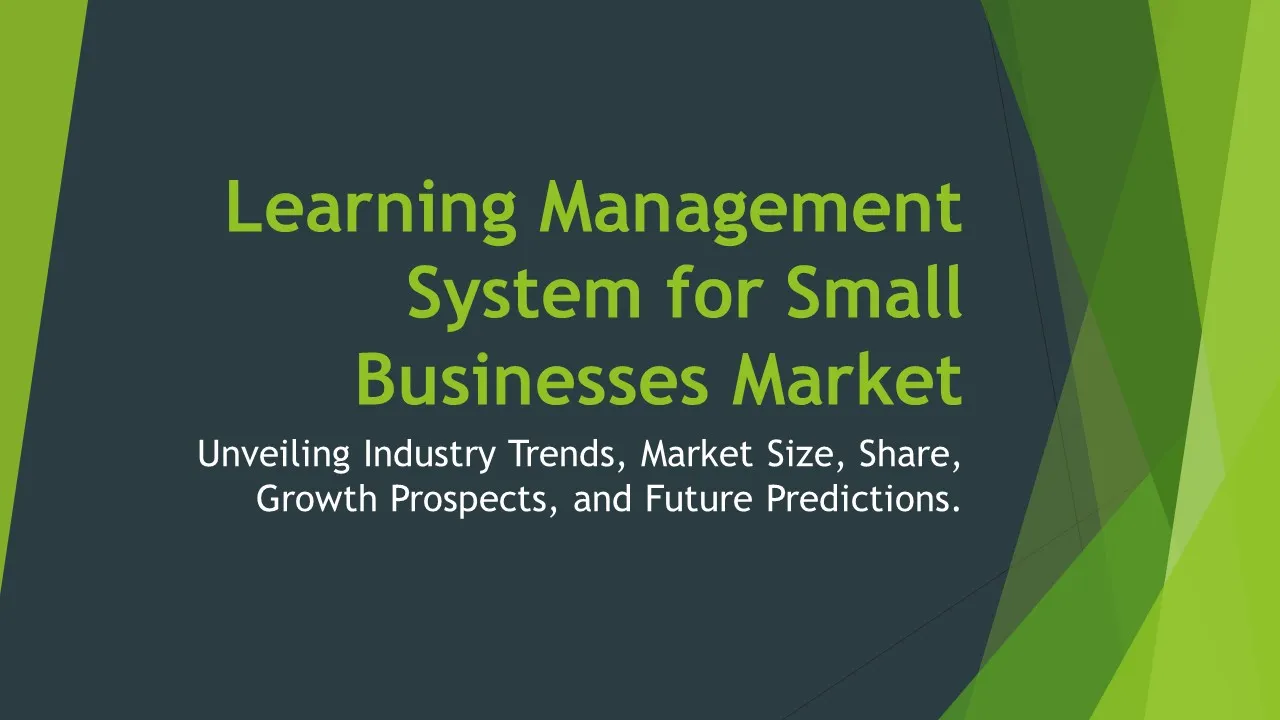Commodity Trading Services
Commodity Trading Services Market Segments - by Service Type (Brokerage, Advisory, Risk Management, Trading Platforms, Clearing and Settlement), Commodity Type (Metals, Energy, Agriculture, Livestock, Others), End-User (Individuals, Institutional Investors, Corporates, Others), Trading Method (Physical Trading, Derivatives Trading, Exchange-Traded Funds), and Region (North America, Europe, Asia Pacific, Latin America, Middle East & Africa) - Global Industry Analysis, Growth, Share, Size, Trends, and Forecast 2025-2035
- Report Preview
- Table Of Content
- Segments
- Methodology
Commodity Trading Services Market Outlook
The global Commodity Trading Services market was valued at approximately USD 10 billion in 2023 and is expected to grow at a CAGR of around 8.5% from 2025 to 2035. Factors contributing to this growth include the increasing demand for various commodities driven by population growth and urbanization, along with the rising complexity of trading operations that necessitate specialized services. Additionally, the growth of digital trading platforms and the integration of advanced technologies like artificial intelligence and blockchain are enhancing operational efficiency and transparency in trading processes. Market players are also focusing on expanding their services to cater to the evolving needs of clients and regulatory requirements, further propelling market growth. The increasing volatility in commodity prices has made risk management an essential aspect, leading to a higher adoption of advisory and risk management services.
Growth Factor of the Market
The growth of the Commodity Trading Services market is primarily fueled by several interrelated factors that reflect the dynamic nature of global trade. First and foremost, the increasing globalization of trade has expanded the reach of commodity markets, allowing traders to access a broader spectrum of commodities across different regions. This has led to a surge in both retail and institutional participation in commodity trading. Moreover, advancements in technology have enhanced trading efficiency, reduced transaction costs, and increased the accessibility of trading platforms to a wider audience. The heightened awareness of market volatility and price fluctuations has prompted traders and investors to seek more sophisticated risk management and advisory services, driving up demand in these segments. Furthermore, the growing trend of sustainability and ethical sourcing among consumers is reshaping the commodity landscape, pushing firms to adapt their trading strategies to address these concerns. Finally, supportive government policies and regulatory frameworks in several regions are making it easier for new entrants and existing players to thrive, thereby contributing to the overall growth of the market.
Key Highlights of the Market
- Rapid technological advancements are transforming trading operations and enhancing market access.
- Increasing participation from retail investors in commodity trading is diversifying market dynamics.
- Heightened demand for advisory and risk management services due to market volatility.
- Growing awareness and emphasis on sustainability in commodity sourcing and trading.
- Favorable regulatory environments are encouraging both new and existing players in the market.
By Service Type
Brokerage :
The brokerage segment is a key component of the Commodity Trading Services market, serving as the intermediary between buyers and sellers. Brokers facilitate transactions on behalf of their clients, providing them with access to various commodity markets. They typically offer a range of services, including executing trades, providing market insights, and offering advisory services. The brokerage landscape is progressively evolving with the advent of online trading platforms that enable real-time trading and reduce the need for physical presence. As a result, the competition among brokerage firms has intensified, leading to innovations in service delivery and pricing strategies to attract and retain clients. The expansion of brokerage services into emerging markets and the adoption of advanced technology to streamline operations further position this segment for growth in the coming years.
Advisory :
The advisory segment plays a crucial role in guiding traders and investors in making informed decisions related to commodity trading. Advisory services typically encompass market analysis, strategy formulation, and risk assessment tailored to the specific needs of clients. The increasing complexity of commodity markets and the volatility in prices have heightened the need for professional advice. Advisory firms leverage their expertise and access to market intelligence to provide actionable insights that can significantly enhance trading outcomes. Furthermore, as more participants, including retail investors, enter the commodity market, the demand for advisory services is expected to rise. This segment is increasingly becoming data-driven, utilizing analytics and predictive models to offer clients a competitive edge in their trading strategies.
Risk Management :
Risk management services are increasingly recognized as essential within the Commodity Trading Services market, given the inherent volatility associated with commodity prices. Companies and investors are focusing on adopting comprehensive risk management frameworks to mitigate potential losses that arise from market fluctuations. These services typically encompass various strategies such as hedging, diversification, and the use of derivatives. The demand for sophisticated risk assessment tools and methodologies is growing, particularly among institutional investors who require robust systems to manage financial exposures effectively. As a result, firms that provide risk management services are evolving and integrating advanced technologies, including machine learning algorithms, to enhance predictive analytics and improve decision-making processes. This segment is poised for continued growth, driven by the necessity for increased resilience in trading operations.
Trading Platforms :
Trading platforms are a fundamental component of the Commodity Trading Services market, providing the technological infrastructure that supports commodity transactions. These platforms facilitate real-time trading, allowing users to buy and sell commodities efficiently. The proliferation of digital technologies has led to the emergence of a wide variety of trading platforms, ranging from simple mobile applications to sophisticated institutional-grade systems. Features such as algorithmic trading, customizable dashboards, and integrated analytical tools are becoming standard offerings to meet the diverse needs of traders. As more participants gravitate toward online trading, the demand for user-friendly and secure trading platforms is expected to surge. Additionally, the rise of fintech companies is driving innovation within this segment, creating opportunities for enhanced user experiences and operational efficiencies.
Clearing and Settlement :
The clearing and settlement services segment is critical in ensuring the integrity and transparency of commodity transactions. This process involves the confirmation, matching, and final settlement of trades, which is essential for minimizing counterparty risks. The evolution of clearinghouses and advancements in blockchain technology are reshaping the landscape of clearing and settlement services. A growing number of market participants are investing in advanced clearing solutions that offer real-time settlement capabilities and greater operational efficiencies. The demand for these services is expected to increase, particularly as more complex trading instruments and emerging commodities enter the market, necessitating reliable and efficient clearing mechanisms to support trading activities.
By Commodity Type
Metals :
Metals, particularly precious metals like gold and silver, have always been a significant focus in commodity trading. The demand for these metals is driven by various factors, including their use in jewelry, electronics, and as a hedge against inflation. The volatility of metal prices, influenced by geopolitical events and economic conditions, creates numerous trading opportunities for investors. As the global economy evolves, the interest in metals trading continues to grow, with traders seeking to capitalize on price movements. Moreover, the increasing interest in sustainable and recycled metals is reshaping trading dynamics, prompting market participants to adjust their strategies accordingly. This segment is expected to witness robust growth, driven by both retail and institutional demand.
Energy :
The energy commodity segment encompasses a range of products, including crude oil, natural gas, and coal. The dynamics of energy trading are heavily influenced by supply and demand factors, geopolitical tensions, and regulatory changes. As countries transition towards renewable energy sources, the landscape of energy trading is evolving, with growing interest in trading renewable energy certificates and carbon credits. The energy sector is also characterized by significant price volatility, creating opportunities for traders who are well-informed and agile. The development of trading platforms specifically designed for energy commodities is further fostering participation from a broader range of traders. This segment is expected to see continued growth, driven by both traditional energy demands and the shift towards sustainable energy solutions.
Agriculture :
Agricultural commodities represent a vital component of the global economy, encompassing a wide range of products such as grains, oilseeds, and soft commodities like coffee and sugar. The agricultural trading segment is significantly influenced by seasonal variations, weather conditions, and global supply chains. The increasing global population and changing dietary preferences are driving demand for agricultural products, leading to heightened trading activities. Furthermore, the rise of agritech companies and innovations in supply chain management are facilitating more efficient trading processes within this segment. As a result, traders are increasingly looking for opportunities in agricultural commodities to meet the rising demand, thereby contributing to the growth of the overall commodity trading market.
Livestock :
The livestock segment of commodity trading includes the trading of live animals and meat products. This segment is characterized by unique trading dynamics, influenced by factors such as feed prices, health regulations, and consumer preferences. The demand for meat and dairy products continues to rise globally, driven by population growth and changing dietary habits, making livestock trading a crucial area for investors. As the industry adapts to challenges such as sustainability and animal welfare, trading practices are evolving. The integration of technology, including blockchain for traceability and supply chain management, is expected to enhance trading efficiencies in this segment. Overall, the livestock trading market presents considerable growth opportunities aligned with global consumption trends.
Others :
The 'Others' category in commodity trading encompasses various niche products that do not fall under the primary categories of metals, energy, agriculture, or livestock. This can include commodities such as timber, rubber, and specialty products. Although individually these commodities may not represent a large market share, collectively they offer diversification opportunities for traders and investors looking to explore less competitive segments. The demand for alternative commodities can be influenced by specific industries or regional markets, making this a dynamic area for trading. Moreover, as global supply chains continue to diversify, new opportunities in this segment may emerge, potentially leading to increased trading activity and overall market growth.
By User
Individuals :
The involvement of individual traders in the Commodity Trading Services market has seen a significant rise, particularly with the advent of online trading platforms that have democratized access to these markets. Individual traders, often referred to as retail investors, are now able to participate in commodity trading with relatively low capital requirements. This has led to an increase in information availability and market education initiatives aimed at empowering individuals to make informed trading decisions. The allure of potentially high returns and diversification has attracted many individuals to explore commodity trading as an investment avenue. As a result, this segment is anticipated to continue growing, supported by innovations in trading platforms and educational resources designed for retail investors.
Institutional Investors :
Institutional investors, such as hedge funds, pension funds, and mutual funds, represent a significant portion of the Commodity Trading Services market, managing substantial capital and often engaging in complex trading strategies. These investors tend to have a deep understanding of market dynamics and employ sophisticated risk management techniques, allowing them to navigate the volatility associated with commodities effectively. Institutional participation is often driven by the need for portfolio diversification, as commodities can act as a hedge against inflation and economic downturns. The increasing interest in commodities as part of asset allocation strategies is expected to fuel demand for specialized trading services tailored to meet the unique needs of institutional clients.
Corporates :
Corporates engage in commodity trading primarily for operational purposes, such as securing raw materials for production or managing input costs. Many companies, especially those in industries like manufacturing, energy, and agriculture, require efficient mechanisms for procuring commodities, necessitating robust trading services. The growing trend of corporates adopting hedging strategies to mitigate price risks associated with commodity fluctuations has led to increased reliance on advisory and risk management services. As these organizations seek to optimize their supply chains and manage financial exposures, the demand for tailored trading services from commodity trading firms is expected to rise. This segment is crucial in driving overall market growth, as corporates increasingly recognize the strategic importance of effective commodity trading practices.
Others :
The 'Others' category in the end-user segment encompasses a variety of participants who may not fit neatly into the defined categories of individuals, institutional investors, or corporates. This can include non-profit organizations, government entities, and other unconventional players who engage in commodity trading for various strategic purposes. While this segment may represent a smaller portion of the overall market, it is characterized by unique needs and demands for specialized trading services. The emergence of new trading strategies and the increasing importance of sustainability and ethical sourcing are prompting these users to explore commodity trading opportunities. As awareness and participation grow, this segment could emerge as a notable contributor to the market dynamics.
By Trading Method
Physical Trading :
Physical trading, involving the actual buying and selling of commodities, is one of the oldest forms of trading and remains a critical component of the Commodity Trading Services market. This method entails the direct exchange of goods between buyers and sellers, typically governed by contracts specifying delivery terms and pricing. Physical trading is particularly relevant for commodities such as agricultural products, metals, and energy, where the tangible nature of the goods necessitates careful consideration of logistics, storage, and quality control. The demand for physical trading is driven by various factors, including global supply chain dynamics and the need for tangible assets in investment portfolios. As markets evolve, physical trading continues to adapt, integrating technology to streamline processes and enhance efficiency.
Derivatives Trading :
Derivatives trading involves the buying and selling of contracts that derive their value from underlying commodities. This method is widely used for hedging against price fluctuations, speculating on future price movements, and managing risk. Derivatives such as futures, options, and swaps provide market participants with flexible tools to navigate the complexities of commodity markets. The increasing volatility in commodity prices has spurred greater interest in derivatives trading, as investors seek to capitalize on market movements while hedging their exposures. As financial markets become more interconnected, the derivatives trading segment is expected to grow, fueled by innovative products and expanding participation from both retail and institutional investors.
Exchange-Traded Funds :
Exchange-Traded Funds (ETFs) have gained popularity in the Commodity Trading Services market as a means for investors to gain exposure to commodities without directly purchasing the underlying assets. ETFs allow individuals and institutional investors to invest in a diversified basket of commodities, offering liquidity and ease of trading. This method is particularly attractive for those looking to diversify their portfolios while minimizing the complexities associated with physical commodities. The rise of commodity-focused ETFs has been facilitated by increased investor interest in alternative asset classes and the growing recognition of commodities as a hedge against inflation. As the demand for ETFs continues to grow, this segment is expected to significantly contribute to the overall expansion of the commodity trading market.
By Region
North America holds a prominent position in the Commodity Trading Services market, accounting for a significant share due to its well-established trading infrastructure and the presence of major commodity exchanges such as the New York Mercantile Exchange (NYMEX) and the Chicago Board of Trade (CBOT). The region benefits from a diverse range of commodities, including energy, metals, and agriculture, contributing to the robust trading activities. The North American market is anticipated to grow at a CAGR of approximately 7% from 2025 to 2035, driven by increasing participation from both retail and institutional investors. Additionally, advancements in trading technology and regulatory support are expected to further enhance the competitiveness of the North American commodity trading landscape.
Europe is another key player in the Commodity Trading Services market, characterized by its mix of established and emerging trading hubs. The region's diverse economies engage in various commodity trading activities, with a strong focus on energy and agricultural products. Countries such as the United Kingdom, Germany, and France are home to several major commodity trading firms and exchanges. The European market is witnessing an increasing trend towards sustainability and ethical sourcing, prompting traders to adapt their strategies accordingly. While growth is steady, the region is projected to experience a CAGR of around 6% over the next decade, influenced by regulatory changes and the evolving landscape of commodity trading.
Opportunities
The Commodity Trading Services market presents substantial opportunities for growth, particularly driven by technological advancements and the increasing demand for transparency and efficiency in trading processes. The integration of emerging technologies such as blockchain and artificial intelligence into trading operations offers the potential to revolutionize how commodities are traded, providing enhanced security, speed, and accuracy. For instance, blockchain technology can improve traceability and reduce counterparty risks, making it an attractive option for traders and investors alike. Additionally, the growing emphasis on sustainability in trading practices presents new avenues for innovation, particularly in how commodities are sourced and traded. Companies that adapt to these trends and leverage technology effectively are likely to gain a competitive edge and capture a larger market share.
Moreover, the global shift towards renewable energy and sustainable commodities is opening new doors for market participants seeking to capitalize on changing consumer preferences. As governments and organizations worldwide prioritize sustainability, the demand for green commodities, such as renewable energy certificates and sustainably sourced agricultural products, is expected to rise. Traders who position themselves to offer specialized services in these emerging markets will not only meet the evolving needs of consumers but also contribute to a more sustainable trading ecosystem. Furthermore, the increasing participation of retail investors, driven by the accessibility of digital trading platforms, presents a promising opportunity for growth, as these platforms often attract a new demographic of traders eager to explore commodity investments.
Threats
Despite the substantial growth opportunities, the Commodity Trading Services market is not without its threats, chief among them being market volatility and geopolitical risks. Commodity prices can fluctuate dramatically due to various factors, including changes in supply and demand, climate events, and political instability in key producing regions. Such volatility can pose significant risks for traders, particularly those involved in physical trading, where price changes can lead to substantial financial losses. Additionally, geopolitical tensions can disrupt supply chains and impact commodity availability, further complicating trading operations. Traders must remain vigilant and develop robust risk management strategies to mitigate these threats. Moreover, the increasing regulatory scrutiny on trading practices can also pose challenges, as firms must navigate complex compliance requirements that can vary significantly across different jurisdictions.
Another potential threat to the Commodity Trading Services market is the rapid pace of technological change, which, while offering numerous advantages, can also present risks. The need for continual investment in technology to remain competitive can strain resources, particularly for smaller firms. The rising prevalence of cyber threats and data breaches in the financial sector also poses significant risks to trading operations, as the reliance on technology increases. Companies must invest in cybersecurity measures to protect sensitive information and maintain investor trust. Failure to adapt to technological advancements or to address these risks could result in a loss of market share and client confidence, ultimately hampering growth prospects.
Competitor Outlook
- Goldman Sachs
- JP Morgan Chase
- Barclays
- Citigroup
- Macquarie Group
- Wells Fargo
- UBS Group
- Deutsche Bank
- Interactive Brokers
- Morgan Stanley
- BTG Pactual
- China International Capital Corporation
- Standard Bank
- ED&F Man Capital Markets
- StoneX Group Inc.
The competitive landscape of the Commodity Trading Services market is characterized by a mix of established financial institutions and specialized trading firms vying for market share. Major players like Goldman Sachs, JP Morgan Chase, and Barclays are leading the pack, leveraging their extensive resources, global reach, and strong reputations to attract both institutional and retail clients. These firms provide a comprehensive range of services, including brokerage, advisory, and risk management, enhancing their competitive advantage in the market. Their ability to invest in technology and innovate trading platforms further solidifies their position as market leaders. Additionally, these institutions often have access to proprietary research and market insights, enabling them to offer valuable information to clients, thereby fostering long-term relationships and loyalty.
In addition to these banking giants, specialized trading firms such as Interactive Brokers and StoneX Group Inc. are making significant inroads into the commodity trading space. These firms often focus on providing tailored services and advanced trading platforms that cater to the diverse needs of their clients. The rise of fintech companies has introduced a wave of innovation in the commodity trading landscape, with many firms developing sophisticated algorithms and analytics to enhance trading efficacy. As competition intensifies, both large institutions and specialized firms are investing heavily in technology to improve their service offerings and operational efficiencies, ensuring they remain relevant in an increasingly digital trading environment.
Furthermore, regional players and emerging market firms are also beginning to establish a foothold in the Commodity Trading Services market, particularly within fast-growing economies. These firms often capitalize on local knowledge and relationships, enabling them to navigate the complexities of regional commodity markets effectively. As the global trading landscape continues to evolve, the competition will likely intensify, with firms striving to differentiate themselves through specialized services, technology adoption, and enhanced client engagement strategies. This dynamic environment presents both challenges and opportunities for market participants as they seek to position themselves for success in a rapidly changing market.
1 Appendix
- 1.1 List of Tables
- 1.2 List of Figures
2 Introduction
- 2.1 Market Definition
- 2.2 Scope of the Report
- 2.3 Study Assumptions
- 2.4 Base Currency & Forecast Periods
3 Market Dynamics
- 3.1 Market Growth Factors
- 3.2 Economic & Global Events
- 3.3 Innovation Trends
- 3.4 Supply Chain Analysis
4 Consumer Behavior
- 4.1 Market Trends
- 4.2 Pricing Analysis
- 4.3 Buyer Insights
5 Key Player Profiles
- 5.1 Barclays
- 5.1.1 Business Overview
- 5.1.2 Products & Services
- 5.1.3 Financials
- 5.1.4 Recent Developments
- 5.1.5 SWOT Analysis
- 5.2 Citigroup
- 5.2.1 Business Overview
- 5.2.2 Products & Services
- 5.2.3 Financials
- 5.2.4 Recent Developments
- 5.2.5 SWOT Analysis
- 5.3 UBS Group
- 5.3.1 Business Overview
- 5.3.2 Products & Services
- 5.3.3 Financials
- 5.3.4 Recent Developments
- 5.3.5 SWOT Analysis
- 5.4 BTG Pactual
- 5.4.1 Business Overview
- 5.4.2 Products & Services
- 5.4.3 Financials
- 5.4.4 Recent Developments
- 5.4.5 SWOT Analysis
- 5.5 Wells Fargo
- 5.5.1 Business Overview
- 5.5.2 Products & Services
- 5.5.3 Financials
- 5.5.4 Recent Developments
- 5.5.5 SWOT Analysis
- 5.6 Deutsche Bank
- 5.6.1 Business Overview
- 5.6.2 Products & Services
- 5.6.3 Financials
- 5.6.4 Recent Developments
- 5.6.5 SWOT Analysis
- 5.7 Goldman Sachs
- 5.7.1 Business Overview
- 5.7.2 Products & Services
- 5.7.3 Financials
- 5.7.4 Recent Developments
- 5.7.5 SWOT Analysis
- 5.8 Standard Bank
- 5.8.1 Business Overview
- 5.8.2 Products & Services
- 5.8.3 Financials
- 5.8.4 Recent Developments
- 5.8.5 SWOT Analysis
- 5.9 Morgan Stanley
- 5.9.1 Business Overview
- 5.9.2 Products & Services
- 5.9.3 Financials
- 5.9.4 Recent Developments
- 5.9.5 SWOT Analysis
- 5.10 JP Morgan Chase
- 5.10.1 Business Overview
- 5.10.2 Products & Services
- 5.10.3 Financials
- 5.10.4 Recent Developments
- 5.10.5 SWOT Analysis
- 5.11 Macquarie Group
- 5.11.1 Business Overview
- 5.11.2 Products & Services
- 5.11.3 Financials
- 5.11.4 Recent Developments
- 5.11.5 SWOT Analysis
- 5.12 StoneX Group Inc.
- 5.12.1 Business Overview
- 5.12.2 Products & Services
- 5.12.3 Financials
- 5.12.4 Recent Developments
- 5.12.5 SWOT Analysis
- 5.13 Interactive Brokers
- 5.13.1 Business Overview
- 5.13.2 Products & Services
- 5.13.3 Financials
- 5.13.4 Recent Developments
- 5.13.5 SWOT Analysis
- 5.14 ED&F Man Capital Markets
- 5.14.1 Business Overview
- 5.14.2 Products & Services
- 5.14.3 Financials
- 5.14.4 Recent Developments
- 5.14.5 SWOT Analysis
- 5.15 China International Capital Corporation
- 5.15.1 Business Overview
- 5.15.2 Products & Services
- 5.15.3 Financials
- 5.15.4 Recent Developments
- 5.15.5 SWOT Analysis
- 5.1 Barclays
6 Market Segmentation
- 6.1 Commodity Trading Services Market, By User
- 6.1.1 Individuals
- 6.1.2 Institutional Investors
- 6.1.3 Corporates
- 6.1.4 Others
- 6.2 Commodity Trading Services Market, By Service Type
- 6.2.1 Brokerage
- 6.2.2 Advisory
- 6.2.3 Risk Management
- 6.2.4 Trading Platforms
- 6.2.5 Clearing and Settlement
- 6.3 Commodity Trading Services Market, By Commodity Type
- 6.3.1 Metals
- 6.3.2 Energy
- 6.3.3 Agriculture
- 6.3.4 Livestock
- 6.3.5 Others
- 6.4 Commodity Trading Services Market, By Trading Method
- 6.4.1 Physical Trading
- 6.4.2 Derivatives Trading
- 6.4.3 Exchange-Traded Funds
- 6.1 Commodity Trading Services Market, By User
7 Competitive Analysis
- 7.1 Key Player Comparison
- 7.2 Market Share Analysis
- 7.3 Investment Trends
- 7.4 SWOT Analysis
8 Research Methodology
- 8.1 Analysis Design
- 8.2 Research Phases
- 8.3 Study Timeline
9 Future Market Outlook
- 9.1 Growth Forecast
- 9.2 Market Evolution
10 Geographical Overview
- 10.1 Europe - Market Analysis
- 10.1.1 By Country
- 10.1.1.1 UK
- 10.1.1.2 France
- 10.1.1.3 Germany
- 10.1.1.4 Spain
- 10.1.1.5 Italy
- 10.1.1 By Country
- 10.2 Asia Pacific - Market Analysis
- 10.2.1 By Country
- 10.2.1.1 India
- 10.2.1.2 China
- 10.2.1.3 Japan
- 10.2.1.4 South Korea
- 10.2.1 By Country
- 10.3 Latin America - Market Analysis
- 10.3.1 By Country
- 10.3.1.1 Brazil
- 10.3.1.2 Argentina
- 10.3.1.3 Mexico
- 10.3.1 By Country
- 10.4 North America - Market Analysis
- 10.4.1 By Country
- 10.4.1.1 USA
- 10.4.1.2 Canada
- 10.4.1 By Country
- 10.5 Middle East & Africa - Market Analysis
- 10.5.1 By Country
- 10.5.1.1 Middle East
- 10.5.1.2 Africa
- 10.5.1 By Country
- 10.6 Commodity Trading Services Market by Region
- 10.1 Europe - Market Analysis
11 Global Economic Factors
- 11.1 Inflation Impact
- 11.2 Trade Policies
12 Technology & Innovation
- 12.1 Emerging Technologies
- 12.2 AI & Digital Trends
- 12.3 Patent Research
13 Investment & Market Growth
- 13.1 Funding Trends
- 13.2 Future Market Projections
14 Market Overview & Key Insights
- 14.1 Executive Summary
- 14.2 Key Trends
- 14.3 Market Challenges
- 14.4 Regulatory Landscape
Segments Analyzed in the Report
The global Commodity Trading Services market is categorized based on
By Service Type
- Brokerage
- Advisory
- Risk Management
- Trading Platforms
- Clearing and Settlement
By Commodity Type
- Metals
- Energy
- Agriculture
- Livestock
- Others
By User
- Individuals
- Institutional Investors
- Corporates
- Others
By Trading Method
- Physical Trading
- Derivatives Trading
- Exchange-Traded Funds
By Region
- North America
- Europe
- Asia Pacific
- Latin America
- Middle East & Africa
Key Players
- Goldman Sachs
- JP Morgan Chase
- Barclays
- Citigroup
- Macquarie Group
- Wells Fargo
- UBS Group
- Deutsche Bank
- Interactive Brokers
- Morgan Stanley
- BTG Pactual
- China International Capital Corporation
- Standard Bank
- ED&F Man Capital Markets
- StoneX Group Inc.
- Publish Date : Jan 21 ,2025
- Report ID : IT-69164
- No. Of Pages : 100
- Format : |
- Ratings : 4.5 (110 Reviews)
Related reports









